Year 4
How people, places and environments interact, past and present
The Year 4 curriculum focuses on interactions between people, places and environments over time and space and the effects of these interactions. Students gain opportunities to expand their world knowledge and learn about the significance of environments, examining how people's need and want of resources over time has affected peoples, societies and environments. Specifically, students study European exploration and colonisation in Australia and elsewhere up to the early 1800s and life for Indigenous Australians pre- and post-contact. They examine the concept of sustainability, and its application to resource use and waste management, past and present, by different groups. The curriculum introduces the role of local government, laws and rules, and group belonging and how they meet people's needs. Themes of law and citizenship extend into their studies of diverse groups, the colonisation of Australia and other places, and how environmental sustainability is enacted.
The content provides opportunities for students to develop humanities and social sciences understanding through key concepts including significance; continuity and change; cause and effect; place and space; interconnections; roles, rights and responsibilities; and perspectives and action. These concepts may provide a focus for inquiries and be investigated across sub-strands or within a particular sub-strand context.
The content at this year level is organised into two strands: knowledge and understanding, and inquiry and skills. The knowledge and understanding strand draws from three sub-strands: history, geography and civics and citizenship. These strands (knowledge and understanding, and inquiry and skills) are interrelated and have been developed to be taught in an integrated way, which may include integrating with content from the sub-strands and from other learning areas, and in ways that are appropriate to specific local contexts. The order and detail in which they are taught are programming decisions.
Inquiry Questions
A framework for developing students' knowledge, understanding and skills is provided by inquiry questions. The following inquiry questions allow for connections to be made across the sub-strands and may be used or adapted to suit local contexts: inquiry questions are also provided for each sub-strand that may enable connections within the humanities and social sciences learning area or across other learning areas.
- How have laws affected the lives of people, past and present?
- What were the short- and long-term effects of European settlement on the local environment and Indigenous land and water management practices?
- What is the significance of the environment and what are different views on how it can be used and sustained, past and present?
(source: www.australiancurriculum.edu.au)
Achievement Standard
By the end of Year 4, students recognise the significance of events in bringing about change and the importance of the environment. They explain how and why life changed in the past and identify aspects of the past that have remained the same. They describe the experiences of an individual or group in the past. They describe and compare the diverse characteristics of different places at local to national scales. Students identify the interconnections between components of the environment and between people and the environment. They identify structures that support their local community and recognise the importance of laws in society. They describe factors that shape a person's identity and sense of belonging. They identify different views on how to respond to an issue or challenge.
Students develop questions to investigate. They locate and collect information and data from different sources, including observations to answer these questions. When examining information, they distinguish between facts and opinions and detect points of view. They interpret data and information to identify and describe distributions and simple patterns and draw conclusions. They share their points of view, respecting the views of others. Students sequence information about events and the lives of individuals in chronological order with reference to key dates. They sort, record and represent data in different formats, including large-scale maps using basic cartographic conventions. They reflect on their learning to propose action in response to an issue or challenge, and identify the possible effects of their proposed action. Students present ideas, findings and conclusions using discipline-specific terms in a range of communication forms.
(source: www.australiancurriculum.edu.au)
Achievement Standard
By the end of Year 4, students recognise the significance of events in bringing about change. They explain how and why life changed in the past and identify aspects of the past that have remained the same. They describe the experiences of an individual or group in the past.
Students sequence information about events and the lives of individuals in chronological order with reference to key dates. They develop questions about the past and locate, collect and sort information from different sources to answer these questions. They analyse sources to detect points of view. Students develop and present texts, including narrative recounts, using historical terms.
(source: www.australiancurriculum.edu.au)
Achievement Standard
By the end of Year 4, students describe the location of selected countries using compass direction. They describe and compare the characteristics of places in different locations at local to national scales. They identify the interconnections between components of the environment and between people and the environment. Students recognise the importance of the environment and identify different possible responses to a geographical challenge.
Students develop geographical questions to investigate and locate, collect and sort information and data from different sources to answer these questions. They record and represent data and the location of places and their characteristics in simple graphic forms, including large-scale maps that use the cartographic conventions of scale, legend, title and north point. They describe the location of places and their features using grid references and compass direction. Students interpret geographical data to identify spatial distributions and simple patterns and draw conclusions. They present findings using geographical terminology in a range of texts. They propose individual action in response to a local geographical challenge and identify some possible effects of their proposed action.
(source: www.australiancurriculum.edu.au)
Achievement Standard
By the end of Year 4, students identify structures and decisions that support their local community and recognise the importance of laws in society. They describe factors that shape a person's identity and sense of belonging.
Students develop questions about the society in which they live and locate and collect information from different sources to answer these questions. They examine information to distinguish between facts and opinions, identify points of view and to draw conclusions. They share their points of view, respecting the views of others, and identify the groups they belong to. Students present ideas and conclusions using discipline-specific terms in a range of communication forms.
(source: www.australiancurriculum.edu.au)
- Plus Plan

Recycling Word Search
Build your students’ vocabulary around the topic of recycling with this recycling-themed word search.
- Plus Plan

Map Skills Teaching Presentation
Teach basic map skills to younger students with this visually appealing and age-appropriate teaching presentation.
- Plus Plan

The First Fleet PowerPoint
A 15 slide editable PowerPoint presentation to use when teaching students about the First Fleet.
- Plus Plan
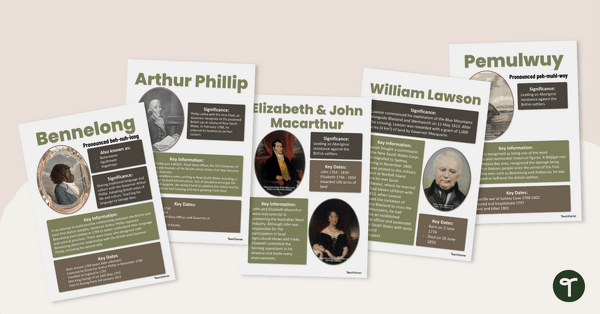
Significant Individuals During Colonisation/Invasion Poster Set
Explore this collection of 9 posters with your Grade 4 HASS students, when learning about impactful persons during the period of colonisation, or invasion, in Australia.
- Free Plan

Renewable vs Non-Renewable Energy Sources – Worksheet
Discover the difference between renewable and non-renewable energy sources with a comprehension passage and worksheet.
- Plus Plan
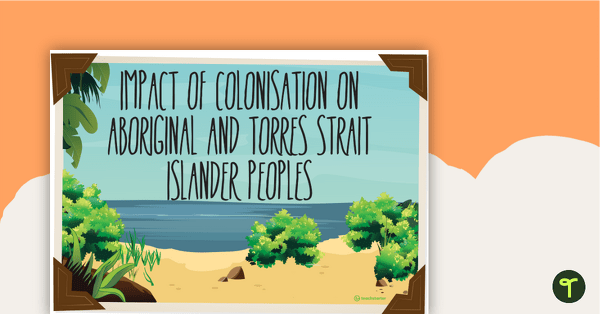
Impacts of Colonisation on Aboriginal and Torres Strait Islander peoples Posters
Posters highlighting the main impacts of colonisation on Aboriginal and Torres Strait Islander peoples.
- Plus Plan

A British Penal Colony - Teaching Slides
A 25 slide editable PowerPoint presentation to use when teaching students about the British colonisation of Australia.
- Plus Plan

Amazon Rainforest Facts - Reading Passage
Read and learn about conservation with a reading passage and comprehension worksheet on the Amazon Rainforest.
- Plus Plan

Captain James Cook and the Endeavour — Teaching Slides
Discover the journey of Captain James Cook on the HMS Endeavour with your students with this teaching presentation.
- Plus Plan

Ecosystem Poster Pack
Introduce your students to the different types of ecosystems with a set of printable Ecosystem posters.
- Plus Plan

Timeline of the First Fleet's Journey to Australia - Banner
A four-page timeline of the history of the voyage of the First Fleet.
- Free Plan

Life as a Convict - Journal Writing Task
A journal writing worksheet for students to complete in the classroom, or as a homework task, when learning about convicts.
- Free Plan

Timeline of James Cook's First Voyage on the Endeavour
A historical timeline to display in the classroom when learning about James Cook's voyage to Australia.
- Plus Plan

British Colonisation of Australia - Early Struggles in the New Colony Poster
A poster to display in the classroom when teaching about the British Colonisation of Australia.
- Plus Plan

An Introduction to Aboriginal Art PowerPoint
A 54 slide editable PowerPoint to use in the classroom when learning about Aboriginal art.
- Plus Plan
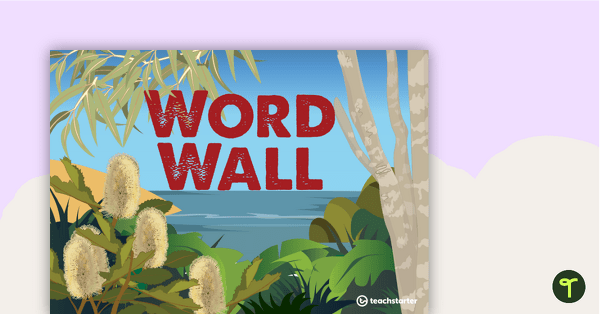
Impacts of Colonisation Word Wall
A Word Wall of the Impacts of Colonisation on Aboriginal and Torres Strait Islander peoples.
- Plus Plan

Lunar New Year Activities Sheet for Kids
Celebrate Chinese New Year in the classroom with this engaging activity sheet packed with Lunar New Year activities.
- Plus Plan

First Fleet - Inquiry Task
An inquiry-based assessment task for students to demonstrate their understanding of the people impacted by the First Fleet.
- Plus Plan

Timeline of Aboriginal and Torres Strait Islander People 66 000 BCE to 1788 CE - Banner
A four-page timeline of the history of Aboriginal and Torres Strait Islander people between 66 000 BCE and 1788 CE.
- Free Plan

Map of the World's Vegetation Zones
Locate and explore the different biomes of the world with this engaging classroom poster.
- Free Plan
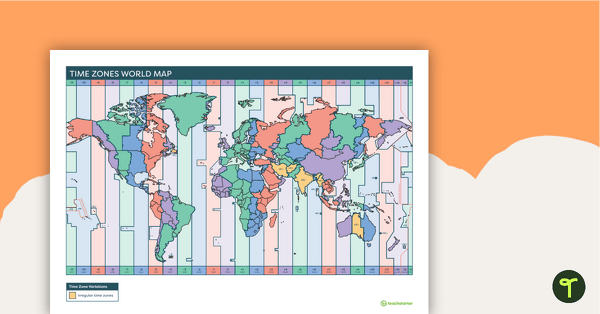
Time Zones World Map
A poster to display in the classroom to show the different time zones of the world.
- Plus Plan

Exploring Plants PowerPoint
Explore the characteristics of plants in our environment with an interactive teaching slide presentation.
- Plus Plan

Responsibilities of Australian Local Governments - Cloze Worksheet
Explore the roles and responsibilities of local governments around Australia with this differentiated cloze passage worksheet.
- Plus Plan

Renewable and Non-renewable Resources – Cut and Paste Worksheet
Sort renewable and non-renewable resources with this cut-and-paste worksheet.
- Free Plan
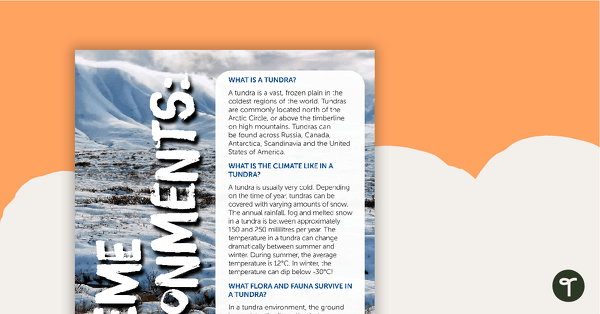
Extreme Environments: Lands of Ice and Sand – Worksheet
A comprehension worksheet for an information report from the Year 4 magazine (Issue 3).
- Plus Plan
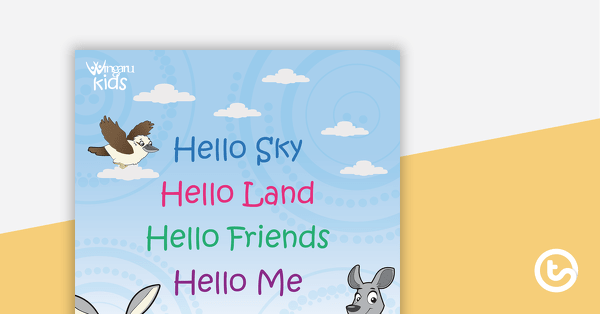
Acknowledgement of Country Hello Poster
A bright and colourful illustrated Acknowledgement of Country Hello poster to display in your classroom.
- Plus Plan

The World's Continents and Oceans – Teaching Presentation
Explore the seven continents and five oceans of the world with this comprehensive teaching presentation.
- Plus Plan

Blank Timeline Template
A blank editable timeline template to use as a recording worksheet in history lessons.
- Plus Plan

Australian History Timeline
A worksheet for students to record information about four significant Australian events.
- Free Plan

Convict Identification Cards - Template
A convict identification card template to use in the classroom when learning about the convicts of the First Fleet.
- Plus Plan

Significant Explorers of Australia - Captain James Cook
A poster to display in the classroom when learning about Captain James Cook.
- Free Plan

An Early Explorer's Map
An early explorer's map to display in the classroom when learning about European exploration.